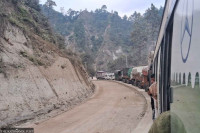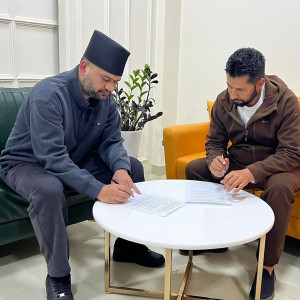Editorial
The government should prepare a plan to achieve total literacy
It should focus more on ways to ensure that the children stay in school until they complete their studies, at least until the secondary level.
Not being able to read is a crippling disability. Until 2008, only 55.6 percent of Nepalis could read and write. Realising the importance of literacy, the government launched the National Literacy Campaign in 2009, and in less than a decade, the country was able to achieve more than 40 percent growth in literacy. In 2014, the government decided to increase the literacy rate as part of the Millennium Development Goals (which is now called the Sustainable Development Goals) to ensure that by 2015, all the children in the country at least finished primary education.
The aim was to declare Nepal as total literate—something that is achieved when a given geographical area has more than 95 percent literacy. Four years down the line, it is 2019 today, and the government is still making claims that it will achieve total literacy in two years—something that it has been saying every year.
The 2011 National Census recorded Nepal’s literacy rate at 65.9 percent. As per the Centre for Education and Human Resource Development, 7.8 million people were illiterate in 2011, while 7.8 million people were living below the poverty line. Since 2011, the government has spent Rs7 billion on literacy campaigns, but it is yet to achieve the desired result. The concept of literacy is often pitched too low in Nepal where enrollment in school is merely equated to being literate. And herein lies the problem. Being literate must have transformative effects on individuals. In our case, that has barely happened.
A new law mandates local governments to ensure that every child from five to 12 years of age is enrolled—and receives free education—in public school. Records at the Ministry of Education show that the net enrolment rate for basic education has gone up to 97 percent. Yet, owing to lack of adequate funding and proper policy for quality education, the quality of education has been continually deteriorating. Further, the dropout rate continues to rise too. So while our literacy levels might have improved, educationally we have been a terrible under-performer.
The government should focus more on ways to ensure that the children stay in school until they complete their studies, at least until the secondary level. Various studies have found that the students who choose to leave school are often those who do not see any financial gain in the long term through education. What’s more, education in public schools is often substandard. Public school teachers are not eager to address the inefficiencies of the government education system. And this needs to change.
While learning to read and write is the first step, the ultimate goal of getting an education should be to be able to differentiate between what is right and what is wrong. The government should be more invested in achieving output from the students who enrol in school rather than merely doing a headcount of the enrollment. Also, it needs to stop making claims and prepare a detailed plan to achieve total literacy in the country.
***
What do you think?
Dear reader, we’d like to hear from you. We regularly publish letters to the editor on contemporary issues or direct responses to something the Post has recently published. Please send your letters to [email protected] with "Letter to the Editor" in the subject line. Please include your name, location, and a contact address so one of our editors can reach out to you.




 5.14°C Kathmandu
5.14°C Kathmandu














